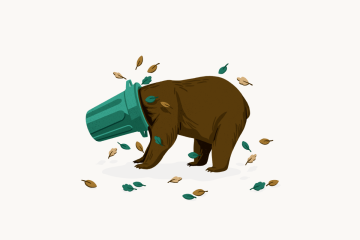
Stagflation Explained: From Stocks to Real Estate
When is an economy at risk of stagflation? And what does that mean exactly? Here, find out what the term means, the consequences of stagflation, and why some might even benefit from it.
8 min read
Right now, rising prices for food, gas, electricity, and more are having a massive impact on our lives. And to top it off, rather than just suffering from inflation, you might be hearing the word “stagflation.” Though the terms are similar, stagflation has different implications than inflation does. Here, you’ll learn what stagflation is, why it happens, what the consequences are, and who stands to benefit from it. We’ll even give you some historical examples of the phenomenon and tips on how to cope. Let’s get started!
The word is seemingly everywhere, but what exactly is stagflation? In fact, it’s an invented word combining stagnation and inflation. To get a handle on this tricky combo, let’s take a closer look at the meaning of these terms.
During economic stagnation, the economy flattens—or stagnates. Economic growth either remains static or slows down drastically, which can result in lower productivity and higher unemployment. As a result, people and companies have less money at their disposal, which can reduce consumer demand and willingness to invest. Stagnation is measured using the gross domestic product or the gross national income. If there isn’t any change in those measures, either positive or negative, this indicates economic stagnation. And, if the economy actually shrinks for at least six months, it's called recession—a decline in economic output.
With inflation, also known as devaluation, the prices of everyday products rise. Reasons for this include an increased demand or shortage of certain goods. Due to higher prices, more and more money goes into circulation, reducing its actual value—meaning that any given currency is not worth as much as it was before.
Inflation is measured as a percentage. An inflation rate of 2% is considered normal—yet the inflation rate in the EU is currently at 11.5 % (as of October, 2022). However, inflation can also feel higher than it actually is, depending on how you shop. If the inflation rate is 50% or higher, it's called hyperinflation.
When it comes to stagflation, inflation and stagnation occur simultaneously—the economy stagnates and its currency depreciates. A well-known example of stagflation is the oil price crisis of 1973/74, which also affected the then-Federal Republic of Germany.
Due to various external factors, crude oil prices rose rapidly at that time. The state paid a lot of money for oil, companies had to file for bankruptcy, and many individuals lost their jobs. Economic growth, still at 4.7% in 1973, slowed down to only 0.2% in 1974, and -1.5% in 1975. The price shock also drove up the inflation rate, which rose to around 7% in 1973 and 1974.
The oil price crisis in the ‘70s may feel eerily familiar given the current rising gas prices and electricity costs. Just as geopolitical conflicts are driving energy prices up today, tensions between nations were also one of the causes of the economic crisis back then. Here’s what happened.
After producing their own oil for quite some time, the U.S. began importing more and more oil from abroad starting in the 1950s, mostly from the Middle East. This meant that oil became cheaper, and as a result, domestic production gradually declined. When the Yom Kippur War broke out in Israel in October 1973, many Arab countries reduced production, mainly because the U.S. and other Western countries sided with Israel.
At the same time, oil prices had been rising for a while due to increasing privatization of the sector—and to forced shortages as a result of the war. Thanks to their high dependence on oil from the Middle East, countries like the U.S. and Germany had to pay high prices to cover their needs, which hurt the domestic economy and promoted inflation. During this time, the federal government introduced—among other things—car-free Sundays and a speed limit to save fuel. However, these measures weren’t enough, and the economy continued to slow. It finally began to recover in 1976.
All this goes to show that it’s rarely one event that kicks off stagflation—it’s a confluence of different factors happening simultaneously. These include dependence on certain commodities, geopolitical tensions, price increases, and more. Our current situation is a prime example—which is why some economic experts fear stagflation may be on the horizon for some countries, such as Germany. The situation is similar in the U.S., according to the Goldman Sachs Stagflation Index, and the World Bank has also revised its forecasts for global economic growth and is now projecting a slump. But what exactly happens in stagflation? Read on to find out.
At its core, stagflation comes down to a distribution problem. Imagine a country that has to import a certain raw material because it’s not available domestically. This becomes a problem when prices rise, but demand for the raw material remains the same. This affects both the state, which has to import the raw material, as well as companies and end consumers, who have to pay higher prices as a result.
If currency devaluation occurs at the same time, the prices of food and other everyday necessities will also rise. In the worst case, a wage-price spiral can form when employees demand a higher salary to compensate for the financial burden, putting additional pressure on companies.
In addition, companies, private individuals, and the state have to save money, meaning jobs get cut, investments are postponed, and unnecessary expenditures are avoided. This can further shrink the economy and worsen unemployment. If this process can’t be stopped, a recession is inevitable.
With high unemployment, rising prices, and an impending recession—those with income insecurity often bear the greatest burden of stagflation and its effects. Still, some actually benefit from stagflation.
There are some everyday products that we cannot live without—even if they become more expensive. That’s why the companies who benefit from stagflation are those who offer these indispensable products—so-called “defensive companies.” When stagflation occurs, their shares increase in value, as is currently the case with many energy providers. Not only do the companies themselves benefit from this, but their shareholders do as well. However, given the economic instability, other stocks may plummet, making investors all the more anxious and driving stock prices down further overall.
As a raw material, gold has long been considered a safe investment. Of course, the price of gold is also subject to fluctuations, but it tends to be more stable than stocks. In the oil price crisis of 1973/74, gold prices even went up. In the event of stagflation, gold could perhaps prove to be a safe haven again—especially if interest rates remain low and savings accounts, for example, aren’t attractive enough to many people.
If you’re considering buying your own home, now could be a great time. Interest rates are still relatively low on home loans—assuming the interest rate is fixed in your financing plan over a longer period of time.
The situation is different if you want to sell a property. When the economy stagnates and the inflation rate is high, this has a negative impact on property prices. Therefore, during stagflation, it can be difficult to sell your property for a profit, especially because you’ll still have to pay capital gains tax.
Even if there are some parallels to the oil price crisis, unlike in the 1970s, central banks now enjoy greater confidence. With prudent monetary policies, they can ward off stagflation and its consequences. For example, if key interest rates are cautiously raised, this sends a positive signal and helps stabilize prices. However, interest rate hikes can also weaken the economy, which is why central banks have to act so cautiously.
Federal governments can also help by relieving companies of their financial burdens. This would secure jobs and boost production, giving the economy more momentum—an approach called supply-side economics. However, relief can also mean that the state has more expenditures and less tax revenue. At some point, this budget deficit will have to be recouped.
As you can see, the way forward is anything but simple, and many diverse factors play a role. So, what can you do on an individual level? If you can't invest in stocks, gold, or real estate and are short on cash, there are clever tips to save money despite higher prices—for example, when shopping for groceries.
_________________________
Security is especially important in uncertain times. As a bank with a full European banking license, your money at N26 is protected thanks to the statutory deposit insurance up to €100,000. You also have numerous ways to save with our 100% mobile, free bank account. Set daily spending and withdrawal limits to stay on budget. Transfer money in real time with no fees in any currency. And, use our innovative Insights feature to see exactly where your money is going each month and find ways to reduce your spending.
With our premium accounts, you’ll also get up to 10 Spaces sub-accounts where you can conveniently save and manage your money. Check out all the benefits and features on our account comparison page. Want to learn more about finances, taxes, or everyday savings tips? Discover a wide array of articles on our blog, like how you can live more economically in 6 steps or what shrinkflation is.
Stagflation, defined
Stagnation: What happens when the economy slows down
Inflation: What happens when money begins to lose its value
Stagflation historically—the oil price crisis of 1973/74
How does stagflation occur?
What happens during stagflation?
Are there any winners when it comes to stagflation?
Stagflation and stock prices
Stagflation and gold
Stagflation and real estate
How can stagflation be combated?
Your money at N26
Find similar stories
BY N26Love your bank
Related Post
These might also interest youBANKING BASICSDear Money: an exercise for rewriting your financial scriptsWhether you feel stuck, anxious, or ready to make a change, writing a letter to money can help you reflect on and reset your financial mindset.
5 min read
INVESTBear market: This is what it meansIf you think a bear market sounds rather scary, you’re already on the right track. In this article, you’ll learn what a bear market is, why it occurs, how it affects your assets and how long it lasts.
11 min read
INVESTBull markets: What they mean for your moneyNot sure what bulls have to do with the financial world? The term is mostly symbolic — but bull markets can have significant effects on your investments. Read on to learn what a bull market is.
10 min read


